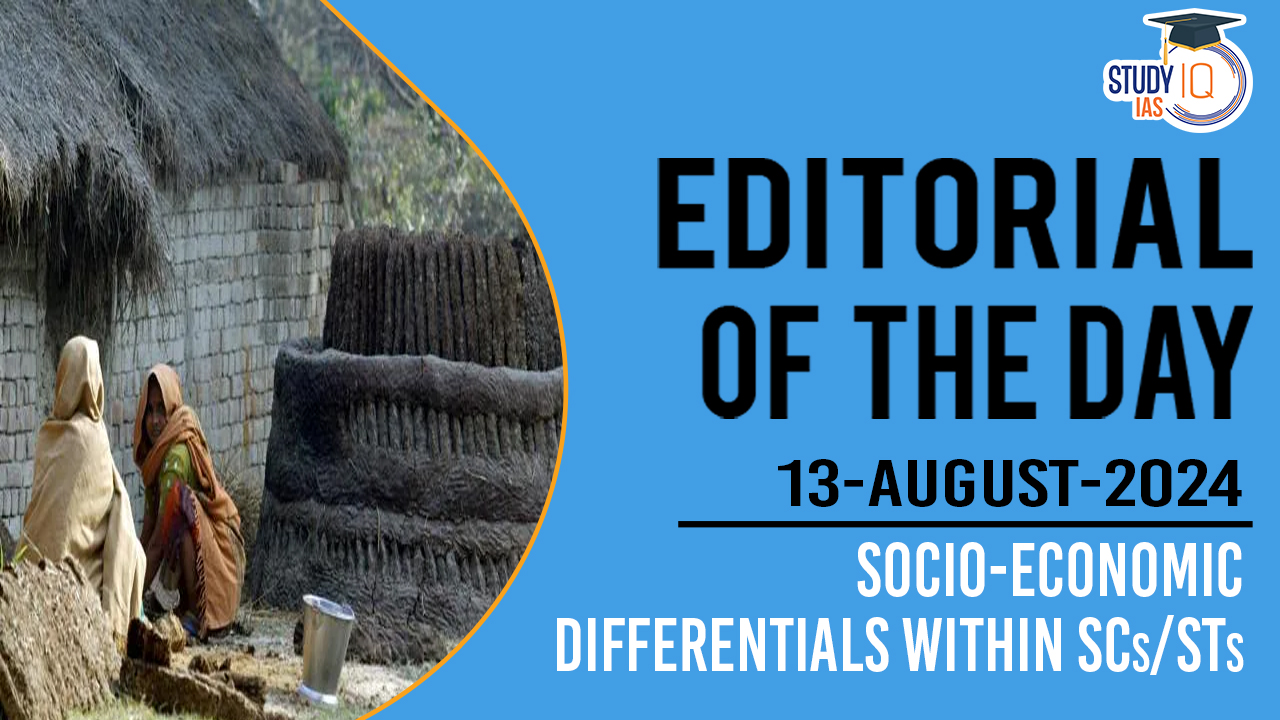Table of Contents
Context: Disparities among SC/ST sub-groups have led the Court to endorse sub-classification, aiming at ensuring a fairer distribution of reservation benefits.
The Critique of Group-Based Affirmative Action
- Homogeneity Assumption: The primary criticism is that affirmative action policies assume all members of a designated group are equally disadvantaged, ignoring intra-group socioeconomic variations.
- Benefits for the Advantaged: This homogeneity assumption leads to benefits accruing disproportionately to relatively privileged sections within the target group, exacerbating inequality.
- Contradiction of Purpose: This outcome undermines the core purpose of affirmative action, which is to reduce overall inequality.
Constitutional Mandates and Judicial Decisions
- Reservation Policy: Seats are reserved for Scheduled Castes (SCs) and Scheduled Tribes (STs) in various sectors by constitutional mandate due to historical disadvantages.
- Supreme Court Rulings:
- 2004 E.V Chinnaih vs State of Andhra Pradesh: The Supreme Court maintained that SCs/STs are a homogenous group, rejecting sub-classifications.
- 2024 Landmark Judgment: The Court reversed its earlier stance, allowing for sub-classifications and sub-quotas within the SC/ST quota to address internal disparities.
Socio-Economic Disparities within SCs/STs
Data from the 2011 census demonstrates the stark differences between sub-groups within SCs and STs in terms of:
- Urbanisation: Some sub-groups have higher levels of urbanisation, which correlates with better access to education and employment opportunities.
- Education: There are significant disparities in educational attainment, with some sub-groups having higher proportions of graduates and postgraduates compared to others.
- Occupation: Sub-groups with higher levels of education are less likely to be engaged in precarious forms of employment like agricultural labour.
Examples of Intra-group Socio-economic Disparities
- Bihar: Musahars are significantly disadvantaged compared to Pasis and Chamars in terms of education and urbanization.
- Maharashtra: Bhambis enjoy better socioeconomic conditions than Mangs.
- Punjab: Chamars are more advantaged than Mazhabis.
- West Bengal: Namsudras have better access to opportunities than Bagdis.
- Chhattisgarh: Halba tribes are more developed than Baiga tribes.
- Jharkhand: Oraons are more advantaged than Mal Paharias.
- Odisha: Oraons are significantly ahead of Bhumia in education.
- Rajasthan: Meenas are the most educated and economically advanced tribal group, while Garasias are relatively deprived.

Implications and Future Directions
- Persistence of Disparities: The analysis confirms ongoing socio-economic disparities within SCs and STs, which suggest that benefits of a uniform reservation system are unevenly distributed.
- Political and Legal Course: While the future actions of the political class remain uncertain, the judicial endorsement of sub-classifications is likely to lead towards a more equitable distribution of reservation benefits.


 Places in News for UPSC 2025 for Prelims...
Places in News for UPSC 2025 for Prelims...
 New Phase of Operation Chakra to Combat ...
New Phase of Operation Chakra to Combat ...
 Soyuz Aircraft: History, Design and Sign...
Soyuz Aircraft: History, Design and Sign...





















